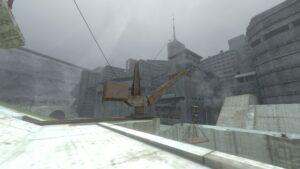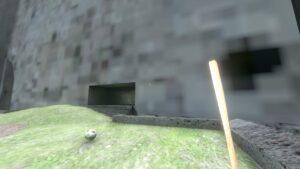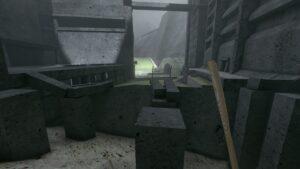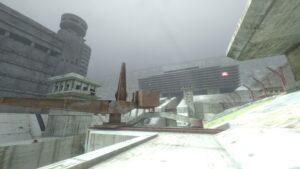For this Critical Play, I played BABBDI, a first person walking and mystery game available on Steam and developed by the publisher Lemaitre Bros.
The main game mechanics the player is presented with are the ability to walk around, the ability to interact with objects and people in the world, and the ability to use said objects in the game world. Through these somewhat simple game mechanics, player dynamic arise providing a sort of mysterious and puzzle type aesthetic for the player. The game’s somewhat tame, blocky, and jagged art design serves to further this aesthetic, offering an old, secluded, Soviet industrial city feeling to the player navigating through it.

Players discover more about the story and steps required to escape BABBDI the longer they play the game, by traversing parkour sections of the map and talking with NPCs who are sprinkled throughout the map. Through the game mechanics, the dynamic of the player walking around and exploring is rewarded with the tools and information required to progress in the narrative. The game also has additional achievements players can work towards and secret objects that the player can collect, which upon completion, provide Steam achievements. This is an additional player incentive.
I personally didn’t find the gameplay loop of the game to be the most engaging, and I stopped playing the game after an hour. While I do enjoy minimalistic art styles, such as low-poly design, the art style BABBDI had to offer was not appealing at all for me. I wonder if the game’s very stylistic art choice was made on purpose to evoke a sense pleasure from the aesthetic, similar to other stylized low poly games, but if so, this was unsuccessful for me. Additionally, the player locomotion had me feeling very nauseous by the end of my playtest session, and I had to take a moment and lie down after playing.

Besides my criticism of the game’s art style, I also found the game’s simplistic game mechanics to not be the most engaging. I would have appreciated more complexity to the locomotion, interaction, and dialogue systems as it would have presented me with something I would have had to learn over the course of the game.

To improve the game, I would focus on working on the two areas I had mentioned before: aesthetics and game mechanics. For aesthetics, I would either aim for more photorealism, or move more into the stylized low-poly aesthetic. The game’s current in-between state is a little jarring for me. I would have also made the interaction and locomotion system more complex, to provide players with a challenging system that requires growth to master. I will concede though, that these criticisms are based on the the types games that I like to play, so others may not have the same criticisms as me, or may even enjoy these aspects of BABBDI.



